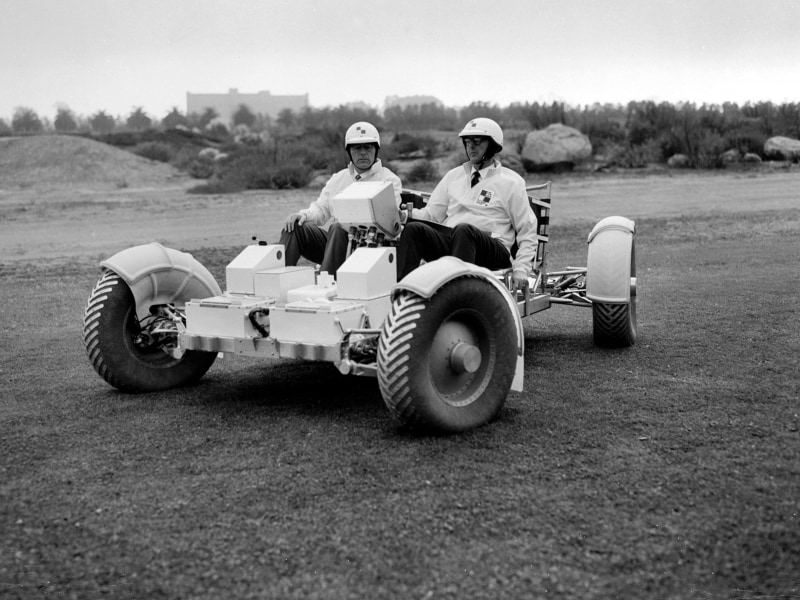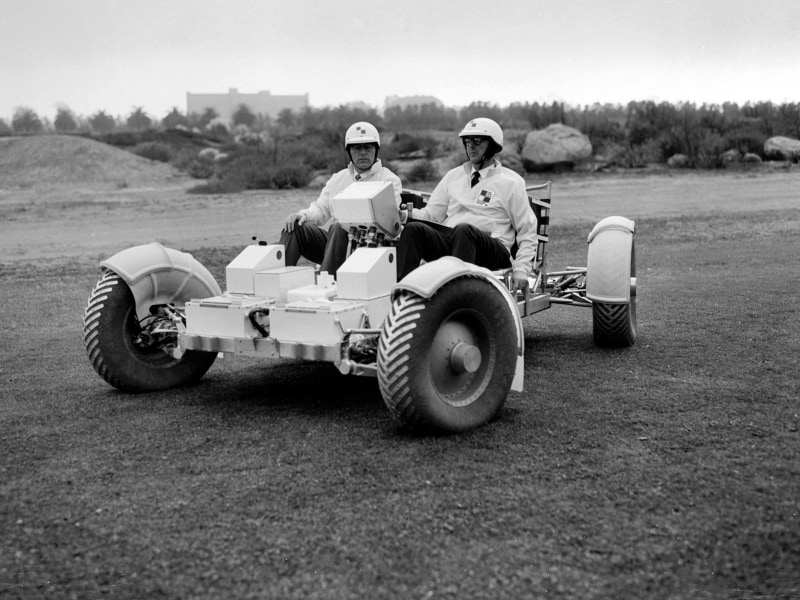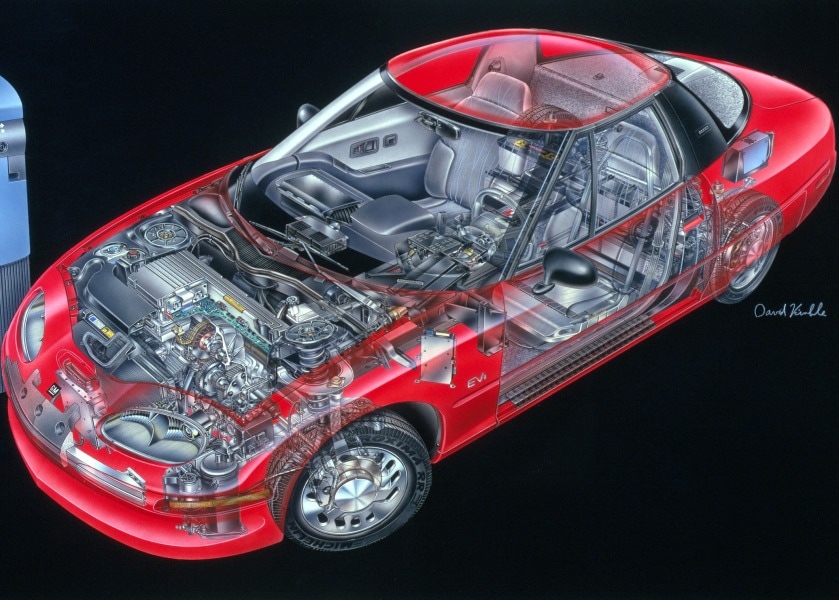Recent Articles
Popular Makes
Body Types
All About The Lunar Rover

The Lunar Rover Vehicle (or LRV), commonly called the lunar rover, was a four wheeled vehicle used on the Moon during the later Apollo missions. Several rover designs were considered, with most versions being larger and much heavier than the final design that was eventually flown to the moon.
General Motors’ Defense Research Laboratories in Santa Barbara, California designed and supplied the mobility system, which included the wheels, motors, and suspension, while Boeing in Seattle, Washington was in charge of the electronics and navigation system. Chassis manufacturing and overall assembly took place at the Boeing facility in Huntsville, Alabama and vehicle testing was done at the Boeing facility in Kent, Washington.
Powered by four DC motors capable of 0.25 horsepower at 10,000 RPM (for a total of 1 whole horsepower) with 80:1 harmonic drives and two 121 Ah silver-zinc potassium hydroxide batteries (for a total of 242 Ah), the vehicles had a theoretical range of 57 miles (the furthest one travelled was 22.3 miles during the Apollo 17 mission), and took the astronauts up to 4.7 miles away from the Lunar Module (also during Apollo 17). The rovers were designed with a top speed of around 8 miles per hour, but astronaut Eugene Carmen hit a top speed of 11.2 miles per hour (making him the current lunar land-speed record holder).
The rover’s unique wheels were developed by GM engineer Ferenc Pavlics, who led the mobility system design team. They consisted of an aluminum hub and a 32 inch diameter by 9 inch wide tire made of zinc-coated woven steel strands that were attached to the rim and discs of formed aluminum. Titanium chevrons attached to the strands provided traction. Inside the tires was a 25.5 inch bump stop frame to help protect the hub. Dust guard fenders (which would eventually prove fragile) were mounted above the wheels.
Maneuvering was controlled by the use of front and rear steering motors. Each of the DC motors was capable of 0.1 horsepower (75 watts). The front and rear wheels could be turned together in opposite directions to achieve a tight turning radius of 10 feet, or individually. In case of drive failure, they were designed to free-wheel to allow for steering control to be maintained.
Four flight-ready rovers were built, three of which were transported to the moon on the Apollo 15, 16, and 17 missions. The fourth rover was used for spare parts when additional Apollo missions were cancelled. All three rovers were left on the moon (and the fourth was dismantled for parts), so any rovers you see on Earth are test vehicles, trainers, mock-ups, or replicas. The rovers weighed in at 463 pounds on Earth, and only 77 pounds under the moon’s gravity, with a payload capacity of 1,080 pounds (179 pounds on the moon).

Chrysler was also very active in the space race, working on important milestones such as the Redstone missile (which worked perfectly, launch after launch), and Jupiter and Saturn rockets. They also had a large electronics division, responsible for many important pieces of equipment for Saturn rockets and the Apollo program, including a Telemetry Checkout System, used for testing the Lunar Excursion Module (LEM). This same electronics division was also responsible for the first mass-produced in-car trip computer, some early digital dashboards, the industry’s first electronic ignition, the first digital engine control computer, the Electronic Voice Alert talking cars, and the world’s first fully digital car radio.
It’s hard to say whether any of the technology or experience that GM gained developing the rover’s propulsion system made it into the old General Motors EV1 or the new Chevrolet Volt (recently shown at the Detroit Auto Show along with the all-electric Bolt concept), Chevrolet Spark EV, or Cadillac ELR. A lot has changed in the last 50 years, but it is safe to say that General Motors should know how to build a reliable electric powertrain (and Uconnect has shown that Chrysler can still build a good radio).
